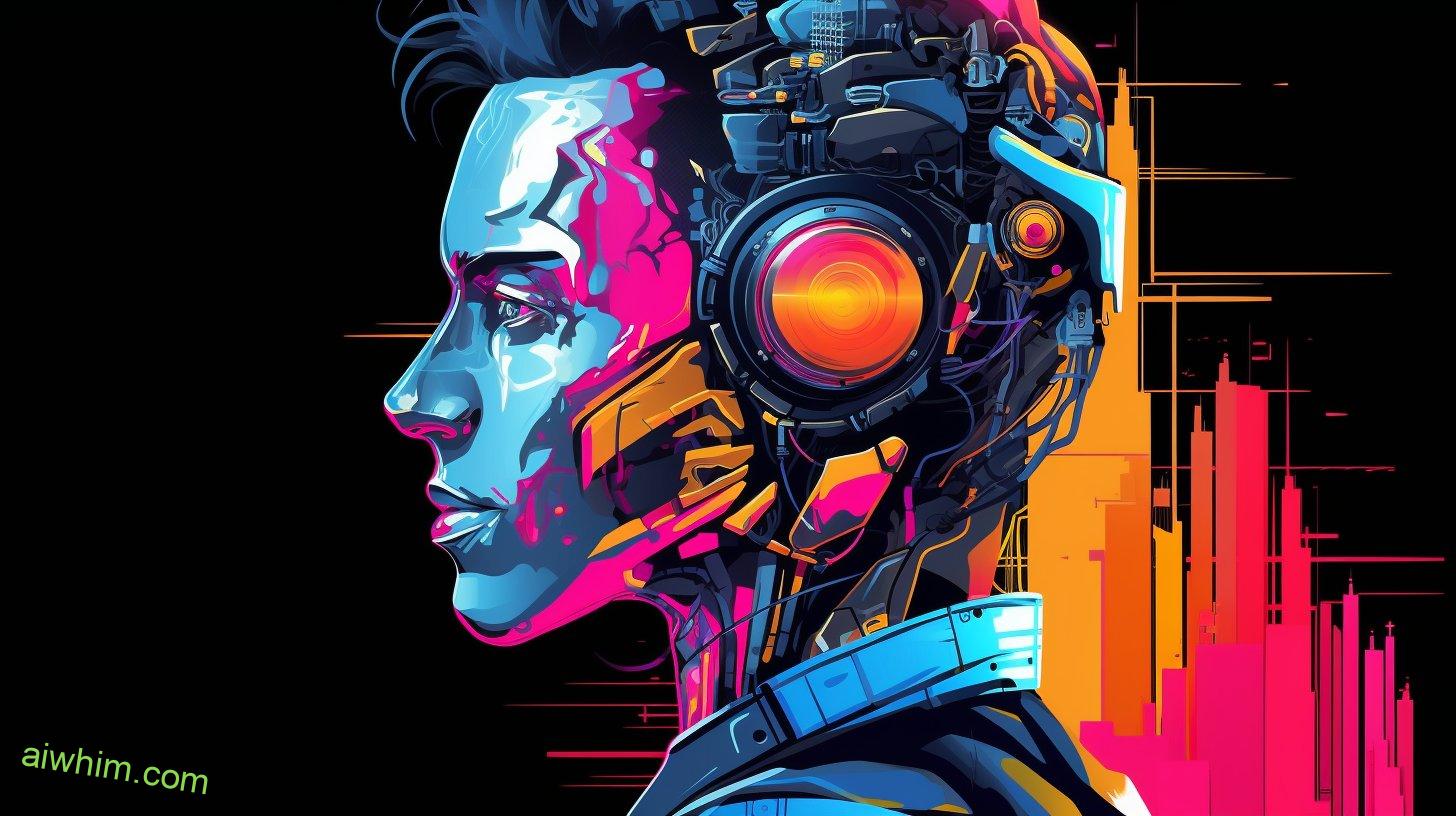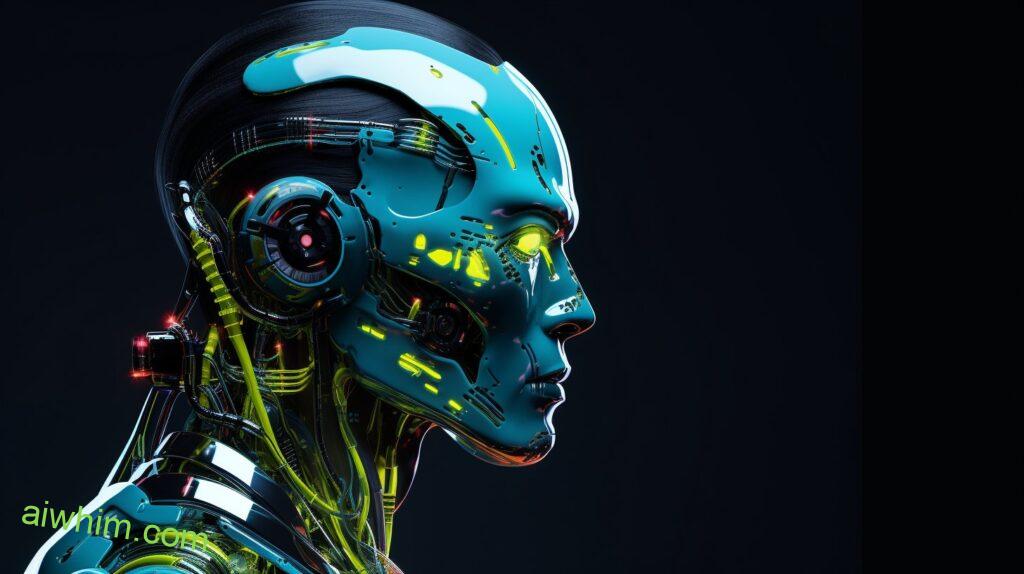As a respiratory therapist, you have likely witnessed the winds of change sweeping through the healthcare industry. With the rapid advancement of technology, specifically artificial intelligence (AI), your role is evolving in ways unimaginable just a few years ago.
AI’s influence has become a force to be reckoned with, revolutionizing patient care and transforming the way you work. But what exactly does this mean for the future of respiratory therapy? How will AI enhance your ability to provide optimal care?
Join us as we explore the evolving role of respiratory therapists in the age of AI, and uncover the limitless possibilities that lie ahead.
Key Takeaways
- AI algorithms revolutionize respiratory therapy research and treatment optimization by providing data-driven insights and personalized care.
- AI contributes to the early detection and diagnosis of respiratory diseases, enabling prompt intervention and improved patient outcomes.
- AI integration enhances patient care by analyzing patient data, continuously monitoring vital signs, and assisting in predicting patient outcomes.
- Leveraging data-driven insights leads to better treatment outcomes and personalized treatment plans, but ethical considerations must be addressed when using AI algorithms in patient care.

The Growing Role of AI in Respiratory Therapy
AI is increasingly playing a pivotal role in respiratory therapy, revolutionizing the way respiratory therapists diagnose and treat patients. With its impact on respiratory therapy research and its role in improving respiratory therapy outcomes, AI is transforming the field and empowering both patients and healthcare professionals.
AI’s influence on respiratory therapy research is undeniable. By analyzing vast amounts of data, AI algorithms can identify patterns and trends that may not be immediately apparent to humans. This allows researchers to gain new insights into respiratory diseases, their causes, and potential treatments. AI can also help identify risk factors and predict patient outcomes, enabling healthcare professionals to provide more personalized and effective care.
Moreover, AI is enhancing respiratory therapy outcomes by optimizing treatment plans. By analyzing patient data, AI algorithms can tailor interventions to individual needs, taking into account factors such as age, medical history, and lifestyle. This precision in treatment planning can lead to better patient outcomes, improved quality of life, and reduced healthcare costs.
Additionally, AI is revolutionizing the way respiratory therapists diagnose patients. Through advanced imaging techniques and machine learning algorithms, AI can detect subtle changes in lung function and identify early signs of respiratory diseases. This early detection enables prompt intervention and management, potentially preventing the progression of diseases and improving patient prognosis.

Enhancing Patient Care Through AI Integration
By seamlessly integrating AI into patient care, respiratory therapists can enhance the quality and effectiveness of treatment. AI-driven advancements have the potential to revolutionize healthcare, and respiratory therapy is no exception. With the help of AI, respiratory therapists can improve clinical outcomes and provide better care to their patients.
One way in which AI can enhance patient care is through the analysis of patient data. AI algorithms can quickly analyze large amounts of patient information, such as medical history, test results, and vital signs. By processing this data, AI can identify patterns and trends that may not be immediately apparent to human therapists. This can lead to more accurate diagnoses and personalized treatment plans.
Another area where AI integration can improve patient care is in the monitoring of respiratory conditions. AI-powered devices can continuously monitor patients’ breathing patterns, oxygen levels, and other vital signs. This real-time monitoring allows for early detection of any changes or deterioration in a patient’s condition, enabling prompt intervention and preventing complications.
Additionally, AI can assist respiratory therapists in predicting patient outcomes. By analyzing historical patient data, AI algorithms can identify risk factors and predict the likelihood of complications or exacerbations. This information can help therapists make informed decisions about treatment options and develop proactive care plans.

Leveraging Data-Driven Insights for Better Treatment Outcomes
With the integration of AI-driven insights, you can leverage data to achieve better treatment outcomes for your patients. The use of data-driven insights can revolutionize the way respiratory therapists approach patient care.
Here are three key ways you can leverage data to improve treatment outcomes:
- Personalized Treatment Plans: By analyzing patient data, AI algorithms can identify patterns and make predictions about the effectiveness of different treatment options. This allows you to tailor treatment plans to each individual patient’s needs, ensuring better outcomes and improved quality of life.
- Early Detection of Complications: AI algorithms can analyze large amounts of data in real-time, helping you identify potential complications before they become severe. By detecting subtle changes in patient data, you can intervene early and prevent complications from worsening, leading to better patient outcomes and reduced hospital stays.
- Continuous Monitoring and Feedback: AI-powered monitoring systems can collect and analyze patient data in real-time, providing you with valuable insights and feedback. This allows you to make informed decisions and adjust treatment plans as needed, ensuring optimal patient care.
While leveraging data-driven insights can significantly improve treatment outcomes, it’s essential to consider data privacy and ethical considerations. It’s crucial to ensure that patient data is handled securely and that appropriate consent is obtained. Additionally, ethical considerations, such as transparency and accountability, must be addressed when using AI algorithms in patient care.

Transforming Respiratory Therapists’ Workflow With AI Tools
Respiratory therapists can streamline their workflow and enhance patient care through the integration of AI tools. AI-powered diagnostics can revolutionize the way you assess and diagnose respiratory conditions, providing you with accurate and timely information to inform your treatment decisions. These tools can analyze medical images, such as X-rays and CT scans, and flag abnormalities or potential areas of concern. By leveraging AI’s capabilities, you can expedite the diagnostic process, allowing you to focus more on patient care and treatment planning.
Another way AI can transform your workflow is by automating documentation. As a respiratory therapist, you understand the importance of accurate and thorough documentation to ensure continuity of care. However, this can be a time-consuming task that takes away from valuable patient interaction. AI tools can automate the documentation process, freeing up your time and allowing you to spend more time with your patients. These tools can transcribe your notes, generate reports, and even suggest treatment plans based on the patient’s history and current condition.

Adapting to the Changing Landscape of Healthcare With AI
To adapt to the changing landscape of healthcare, AI offers respiratory therapists the opportunity to revolutionize their practices and improve patient outcomes. With the rapid advancements in technology, it’s crucial for healthcare professionals to embrace the potential that AI brings.
Here are three ways AI can help respiratory therapists adapt to the changing healthcare landscape:
- Enhanced Diagnosis and Treatment: AI-powered algorithms can analyze vast amounts of patient data, including medical records, test results, and imaging scans, to assist respiratory therapists in accurately diagnosing and treating respiratory conditions. This technology can provide valuable insights and recommendations, helping therapists make more informed decisions and improving patient care.
- Streamlined Workflow: AI can automate repetitive tasks, such as data entry, documentation, and scheduling, allowing respiratory therapists to focus more on direct patient care. By reducing administrative burden, AI can improve efficiency and productivity, enabling therapists to see more patients and deliver higher-quality care.
- Personalized Care: AI can analyze patient data and patterns to create personalized treatment plans for individuals with respiratory conditions. By considering factors such as medical history, lifestyle, and genetic information, AI can help therapists tailor interventions and medications to each patient’s unique needs. This personalized approach can lead to better treatment outcomes and improved patient satisfaction.

Addressing Challenges in Implementing AI in Respiratory Therapy
Implementing AI in respiratory therapy can present various challenges that you need to address. One of the challenges faced is the integration of AI systems into existing workflows. It can be difficult to seamlessly incorporate new technology without disrupting the established processes. To overcome this challenge, it’s important to involve respiratory therapists in the implementation process. By seeking their input and feedback, you can ensure that the AI systems align with their needs and workflow requirements.
Another challenge is the interoperability of AI systems with existing healthcare IT infrastructure. It’s crucial to have a comprehensive understanding of the current IT systems and their limitations. This will help in developing effective implementation strategies that allow for seamless integration of AI technologies. Collaborating with IT experts and stakeholders can help in identifying potential roadblocks and finding solutions to address them.
Data privacy and security is also a significant challenge when implementing AI in respiratory therapy. AI systems rely on large amounts of patient data for training and decision-making. Therefore, it’s essential to have robust data protection measures in place. Implementing encryption, access controls, and regular security audits can help safeguard patient information and mitigate potential risks.
Furthermore, the lack of awareness and understanding among respiratory therapists about AI can hinder its successful implementation. Providing comprehensive training and education programs can bridge this gap and empower respiratory therapists to embrace AI technologies. This can include workshops, seminars, and hands-on training sessions to familiarize them with AI concepts and applications in respiratory therapy.

Improving Diagnostic Accuracy With AI Algorithms
Can AI algorithms enhance the accuracy of respiratory therapy diagnostics? Absolutely! Machine learning algorithms have the potential to revolutionize the way we diagnose conditions in respiratory therapy. With their ability to analyze vast amounts of data and identify patterns that may not be apparent to human eyes, these algorithms can provide valuable insights and improve diagnostic accuracy.
Here are three ways in which AI algorithms can enhance the diagnostic process:
- Early detection: Machine learning algorithms can analyze a patient’s medical history, symptoms, and test results to identify early signs of respiratory conditions. By detecting these conditions at an early stage, treatment can be initiated promptly, leading to better outcomes and improved patient health.
- Precision medicine: AI algorithms can analyze a patient’s genetic information and tailor treatment plans to their specific needs. This personalized approach can lead to more effective treatments and better patient outcomes, as it takes into account individual variations and responses to different therapies.
- Decision support: AI algorithms can provide respiratory therapists with real-time recommendations and decision support during the diagnostic process. By analyzing patient data and comparing it to a vast database of medical knowledge, these algorithms can assist therapists in making accurate and informed decisions, reducing the risk of misdiagnosis and unnecessary treatments.

Personalizing Treatment Plans With AI-Based Patient Monitoring
AI algorithms have the potential to revolutionize the field of respiratory therapy by personalizing treatment plans through AI-based patient monitoring. With personalized interventions and AI-driven monitoring, respiratory therapists can provide tailored care that meets the unique needs of each patient.
By harnessing the power of AI, respiratory therapists can collect and analyze vast amounts of patient data in real-time. This data includes vital signs, oxygen levels, and other relevant physiological parameters. AI algorithms can then process this information to identify patterns and trends that may not be immediately apparent to the human eye. These insights enable respiratory therapists to create personalized treatment plans that address the specific needs of each patient.
AI-based patient monitoring also allows for continuous evaluation and adjustment of treatment plans. Through the use of sensors and wearable devices, respiratory therapists can gather data on patients’ respiratory function and response to therapy. AI algorithms can then analyze this data to provide real-time feedback and recommendations for optimizing treatment.
Personalized interventions based on AI-driven monitoring can improve patient outcomes by ensuring that treatment plans are tailored to individual needs. This approach takes into account factors such as comorbidities, lifestyle, and response to previous therapies. By adapting treatment plans in real-time, respiratory therapists can better manage and prevent exacerbations, optimize medication dosages, and provide timely interventions when needed.

Optimizing Respiratory Therapy Protocols Using AI
To optimize respiratory therapy protocols, you can leverage the power of AI algorithms to analyze patient data and make informed decisions. AI-driven respiratory therapy advancements have revolutionized the field, offering new possibilities for improving patient outcomes and optimizing treatment plans.
By harnessing the potential of AI-powered treatment optimization, respiratory therapists can enhance the quality and efficiency of care, providing patients with the freedom to breathe easier and live healthier lives.
Here are three ways in which AI can optimize respiratory therapy protocols:
- Precision Diagnosis: AI algorithms can analyze vast amounts of patient data, including medical history, symptoms, and diagnostic test results, to assist respiratory therapists in making accurate and timely diagnoses. By identifying patterns and correlations that may not be immediately apparent to the human eye, AI can help optimize the diagnostic process and ensure that patients receive the most appropriate treatment.
- Personalized Treatment Plans: AI algorithms can analyze individual patient characteristics, such as age, gender, comorbidities, and lifestyle factors, to tailor treatment plans specifically to each patient’s unique needs. By considering these factors, AI can optimize respiratory therapy protocols and ensure that patients receive personalized care that’s tailored to their specific circumstances.
- Real-time Monitoring and Feedback: AI-powered monitoring systems can continuously analyze patient data in real-time, providing respiratory therapists with instant feedback on treatment effectiveness and patient progress. This real-time monitoring can help therapists make informed decisions about adjusting treatment protocols and optimizing patient care.

AI’s Potential Implications for the Future of Respiratory Therapy
Respiratory therapists will play a crucial role in shaping the future of respiratory therapy as AI continues to advance and integrate into healthcare practices. With the increasing capabilities of AI, there are potential implications that can enhance diagnosis and treatment decisions for respiratory conditions.
AI has the potential to revolutionize the field of respiratory therapy by providing advanced tools for diagnosis. With the ability to analyze vast amounts of data, AI algorithms can detect patterns and anomalies in respiratory tests, aiding in the early detection of conditions such as asthma, chronic obstructive pulmonary disease (COPD), and sleep apnea. This can lead to timely interventions and improved patient outcomes.
Additionally, AI can support respiratory therapists in making treatment decisions by providing personalized recommendations based on patient data and medical guidelines. By analyzing patient-specific factors such as age, medical history, and treatment response, AI algorithms can assist in determining the most effective treatment plans. This can optimize the use of resources and improve patient satisfaction.
Furthermore, AI can help respiratory therapists in monitoring patient progress and adjusting treatment plans accordingly. By continuously analyzing real-time data from wearable devices and medical sensors, AI algorithms can provide timely feedback and alerts, allowing therapists to intervene promptly in case of any deterioration or complications.
While AI has the potential to greatly enhance respiratory therapy, it’s important to note that its implementation should be done in collaboration with respiratory therapists. They possess the clinical expertise and holistic understanding of patient care that AI lacks. By working together, respiratory therapists and AI can create a future where diagnosis and treatment decisions are augmented by advanced technology, ultimately improving patient outcomes and quality of life.

The Importance of Continued Education for Respiratory Therapists in the AI Era
As the field of respiratory therapy continues to evolve with the integration of advanced technology, it’s essential for respiratory therapists to prioritize continued education in order to adapt to the demands of the AI era. The rapid advancements in artificial intelligence (AI) have the potential to revolutionize the healthcare industry, and respiratory therapists must stay up-to-date with the latest developments to provide the best possible care for their patients.
Here are three reasons why continued education is crucial in the AI era:
- Keeping up with AI integration: AI technologies are being integrated into respiratory therapy practices to streamline processes, improve patient outcomes, and enhance diagnostic capabilities. By continuing their education, respiratory therapists can stay informed about the latest AI tools and techniques, ensuring that they can effectively utilize these advancements in their daily practice.
- Enhancing critical thinking skills: As AI takes over certain tasks, respiratory therapists will need to focus on higher-level critical thinking skills. Continued education allows therapists to develop these skills, enabling them to analyze complex situations, make informed decisions, and provide personalized care that complements AI technologies.
- Adapting to changing roles: The integration of AI in respiratory therapy may lead to a shift in the roles and responsibilities of therapists. Continued education ensures that therapists are prepared to adapt to these changes and take on new challenges. By staying updated on AI developments, therapists can proactively shape their roles and contribute to the evolution of the field.

Frequently Asked Questions
How Does AI Improve Diagnostic Accuracy in Respiratory Therapy?
AI improves diagnostic accuracy in respiratory therapy by analyzing patient data and identifying patterns that may be missed by human clinicians. This enhances patient outcomes by enabling early detection and personalized treatment plans, ultimately improving treatment efficacy.
What Are Some Potential Challenges in Implementing AI in Respiratory Therapy?
You may encounter hurdles when implementing AI in respiratory therapy. Ethical considerations and challenges like data privacy and patient trust need to be addressed. But with careful navigation, you can overcome these obstacles and pave the way for a brighter future in healthcare.
How Can Ai-Based Patient Monitoring Personalize Treatment Plans?
AI-driven patient monitoring can revolutionize personalized treatment plans. By analyzing data in real-time, AI can identify patterns and make informed recommendations, leading to optimized care plans tailored to your specific needs.
What Are the Potential Implications of AI for the Future of Respiratory Therapy?
In the future, AI could revolutionize respiratory therapy, improving patient outcomes and personalizing treatment plans. However, ethical considerations must be addressed to ensure the freedom and well-being of patients are not compromised.
Why Is Continued Education Important for Respiratory Therapists in the AI Era?
In the AI era, continued education is crucial for respiratory therapists. AI advancements are constantly evolving, and to stay relevant and provide the best care, you must keep learning and adapting.

Conclusion
In conclusion, as AI continues to advance and integrate into respiratory therapy, respiratory therapists are evolving their roles to provide enhanced patient care.
Like a skilled conductor leading an orchestra, AI tools are helping respiratory therapists optimize treatment protocols, personalize patient monitoring, and improve treatment outcomes.
With continued education and adaptation to the changing healthcare landscape, respiratory therapists are well-positioned to utilize AI’s potential implications for the future of respiratory therapy, ultimately improving the lives of their patients.







